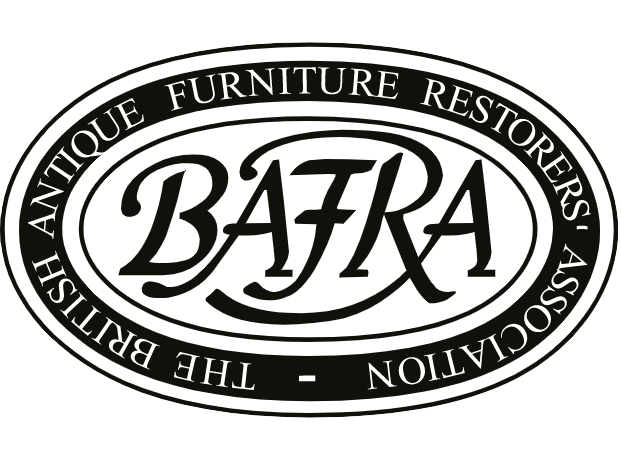
Antique Foundry Work Restoration & Repair
At BAFRA, we provide access to foundry work for antique furniture. Every member has been rigorously assessed and vetted. Our members are all established businesses that are fully accredited and work to the highest standards and ethics.
Antique Foundry Work Restorers at BAFRA
Antique foundry work restoration and repair holds historical and aesthetic value. Restoration and repair of such pieces require specialised expertise to revive their original beauty. The process typically involves meticulous cleaning to remove corrosion and grime, followed by careful examination to identify structural issues or missing components. BAFRA skilled restorers then employ casting techniques to replicate any damaged sections, ensuring seamless integration with the original design. The restoration may also include surface treatments, such as patination or gilding, to recreate the authentic appearance. Welding and metalworking skills are often essential for repairing cracks or breaks while maintaining the integrity of the antique.
Collaboration with conservation experts at BAFRA is crucial in determining the appropriate level of intervention required while respecting the historical context and craftsmanship. Once restored, these antiques not only regain their aesthetic allure but also contribute to preserving our heritage. Antique foundry work restoration requires a delicate balance of craftsmanship, artistry, and historical sensitivity, ensuring that these pieces continue to tell their stories for generations to come.
Antique Foundry Work Restoration FAQs
What is antique foundry work restoration?
Foundry work is the process of casting a metal object, to create both ornamental and functional objects made of metal, by pouring molten metal, such as iron, brass, copper, bronze or steel, into a mould and allowing it to solidify and form an object. Antique foundry work restoration is the process of renewing and preserving these antiques through careful cleaning, repair, and replication of missing or damaged components. BAFRA skilled restorers utilise a combination of traditional and modern techniques to revive the original beauty and structural integrity of these historical pieces.
Why is restoration important for antique foundry work?
Restoration is essential for antique foundry work as it safeguards the historical and artistic legacy embedded in these cast iron artefacts. Over time, these pieces may succumb to corrosion, damage, or wear, compromising their structural integrity and aesthetic appeal. Restoration not only revives the original beauty but also ensures its longevity, allowing future generations to appreciate the craftsmanship of a bygone era. Preserving antique foundry work through restoration contributes to cultural heritage, enabling these antiques to continue telling stories and serving as tangible links to the past.
What types of damage can occur to antique foundry work?
Antique foundry work is susceptible to various types of damage over time. Corrosion, resulting from exposure to the elements, can degrade the metal surface. Structural issues such as cracks or breaks may occur due to environmental stress or accidents. Missing components, whether due to wear or deliberate removal, can compromise the artefact's integrity. These damages not only affect the aesthetics but also pose threats to the structural stability of the cast iron pieces. Restoration addresses these issues by repairing or replicating damaged parts, ensuring longevity and continued appreciation.
What types of antique foundry work are BAFRA-accredited members able to restore?
The conservation and restoration of various types of antique metalwork including statues, and replica castings for missing furniture fittings, such as handles, using traditional lost wax or sand casting techniques, during which a duplicate metal fitting is cast from an original. When there is no original piece to copy from, then a suitable replacement may be carved from wax.
How are missing or damaged components replicated during restoration?
During the restoration of antique foundry work, missing or damaged components are replicated through meticulous casting techniques. BAFRA skilled restorers carefully create moulds from existing, intact parts of the artefact. Molten metal is then poured into these moulds to form precise replicas of the missing elements. This process ensures that the replicated components seamlessly integrate with the original design, both aesthetically and structurally. The art of casting allows for the recreation of intricate details, restoring the antique to its former glory. Through this precise replication, the restoration process preserves the historical accuracy and craftsmanship of the antique foundry work.
Is restoration different from conservation for antique foundry work?
Restoration and conservation for antique foundry work differ in their approaches to preservation. Restoration involves renewing and repairing antiques to their original state, often including replication of missing components. This approach prioritises aesthetic and structural revival. In contrast, conservation focuses on preserving the original state, aiming to maintain patina and historical integrity with minimal intervention. Conservationists emphasise stabilising antiques without significant alterations. The choice between restoration and conservation depends on the goals of preservation, balancing the desire to revive historical beauty with the commitment to respecting an object's authentic ageing and cultural context in antique foundry work.
Why choose a BAFRA-accredited member to restore antique foundry work?
The importance of having antique foundry work restored by a BAFRA-Accredited qualified craftsman cannot be stressed enough, as once a piece has been badly restored, or the surface and patination spoilt by an overzealous cleaning process, the damage cannot be rectified.
Find BAFRA Accredited Foundry Work Specialists
All accredited, full members are required to have at least five years as a conservation-restoration professional (the average member today has 23 years experience) and pass an exacting assessment on their skills, knowledge and business credentials. Our members acknowledge the importance of continuous professional development to keep abreast of advances in knowledge, skills and technical developments in foundry work and restoration.
Find a BAFRA-accredited foundry work and restoration near you by clicking the button below and entering your postcode.

